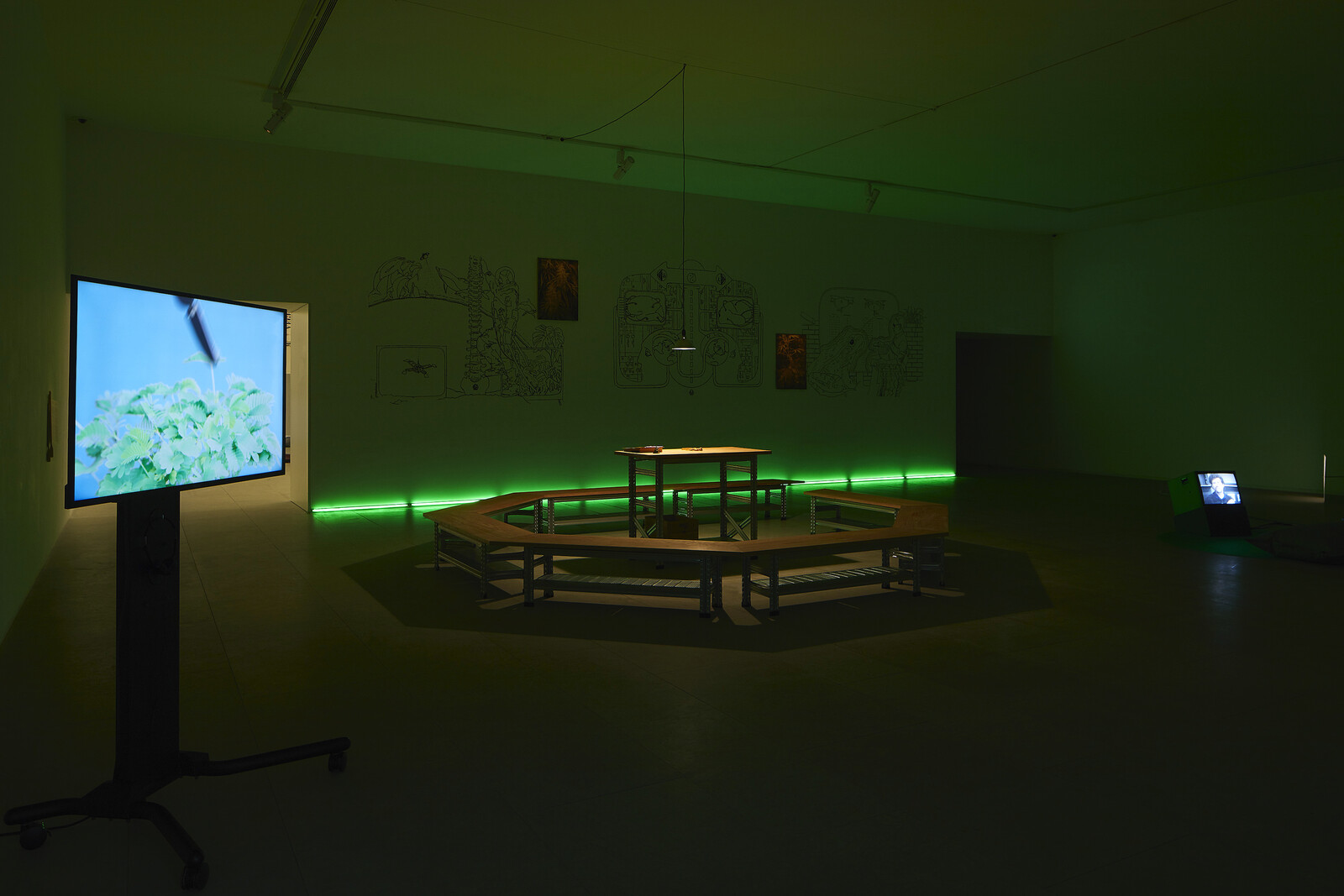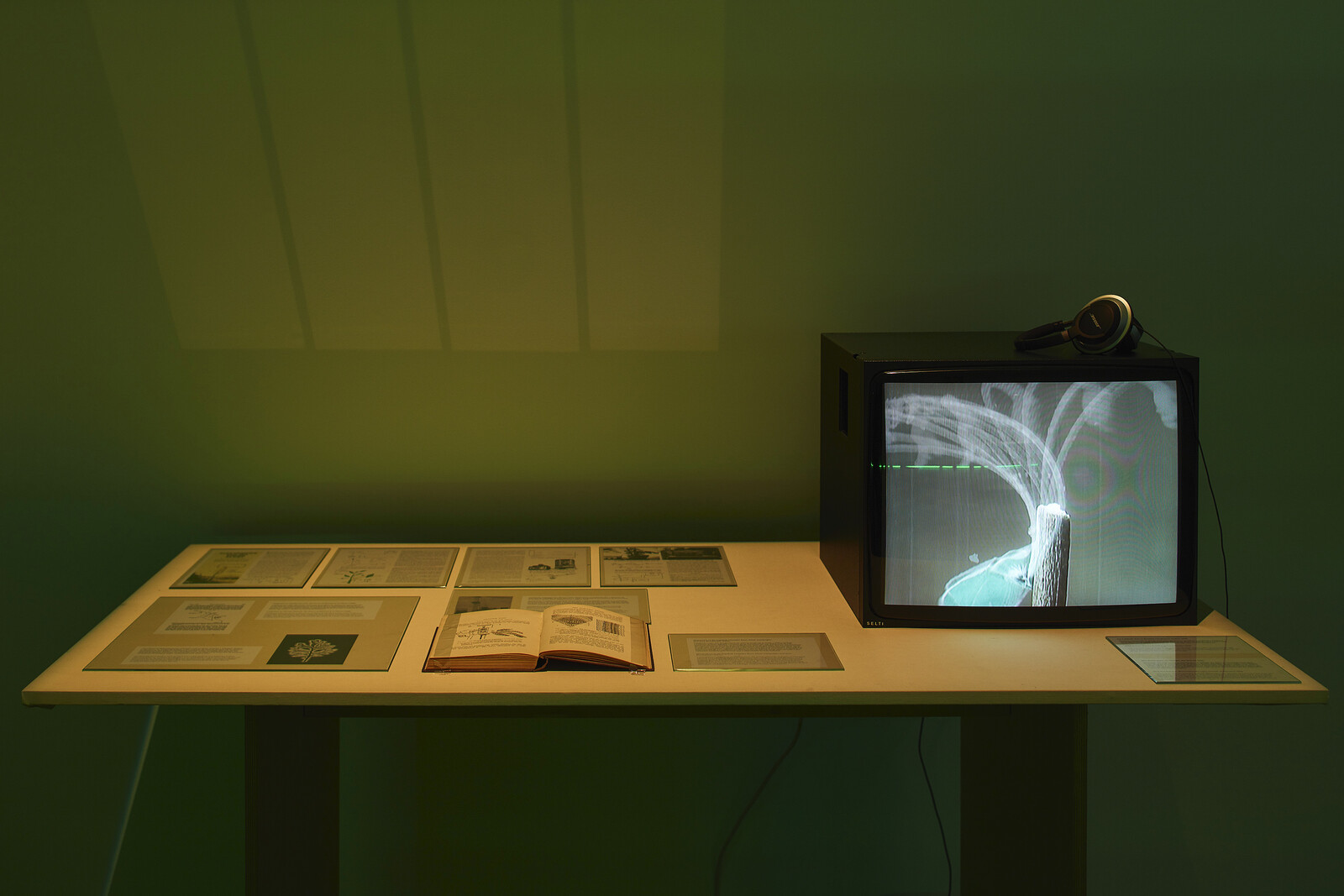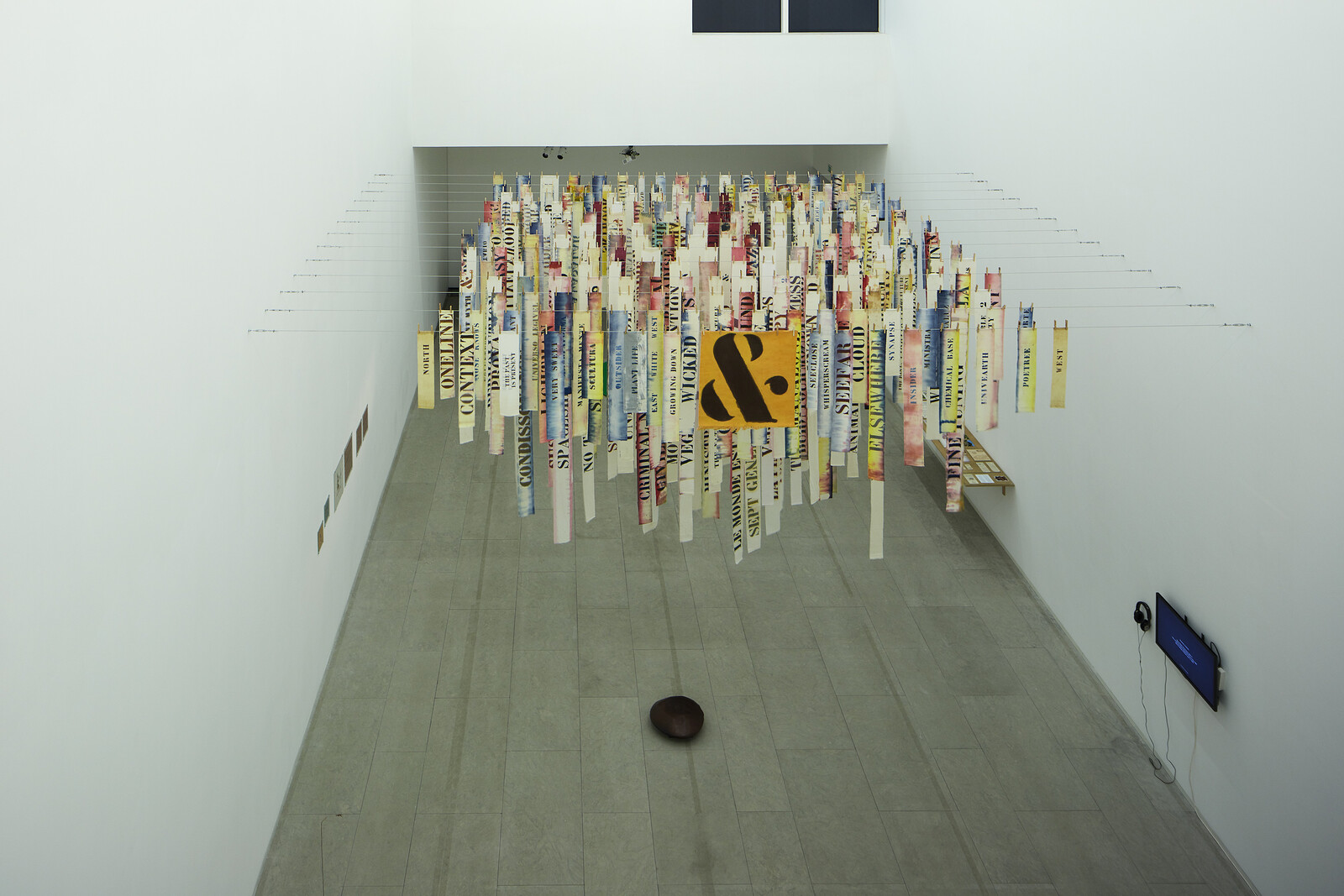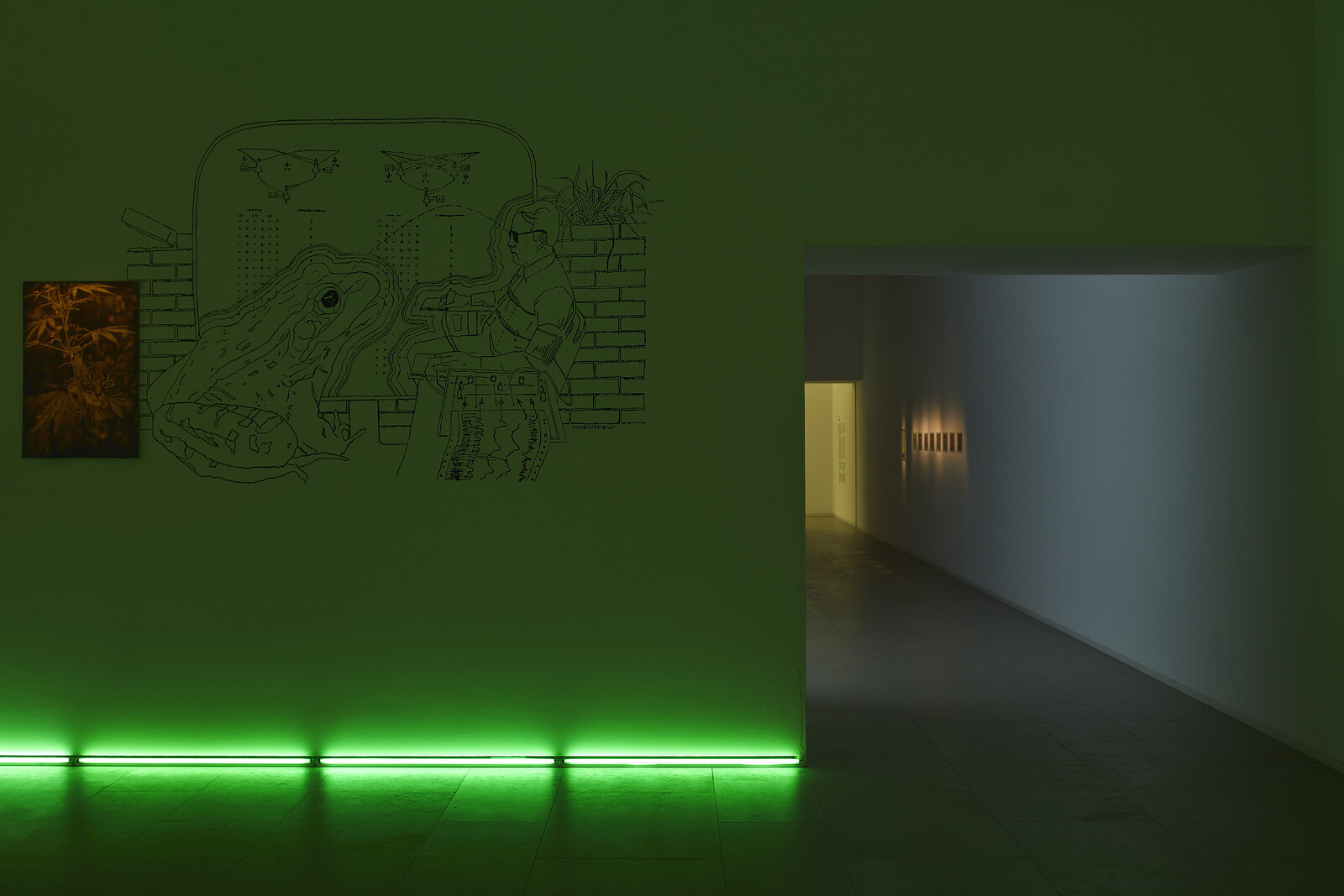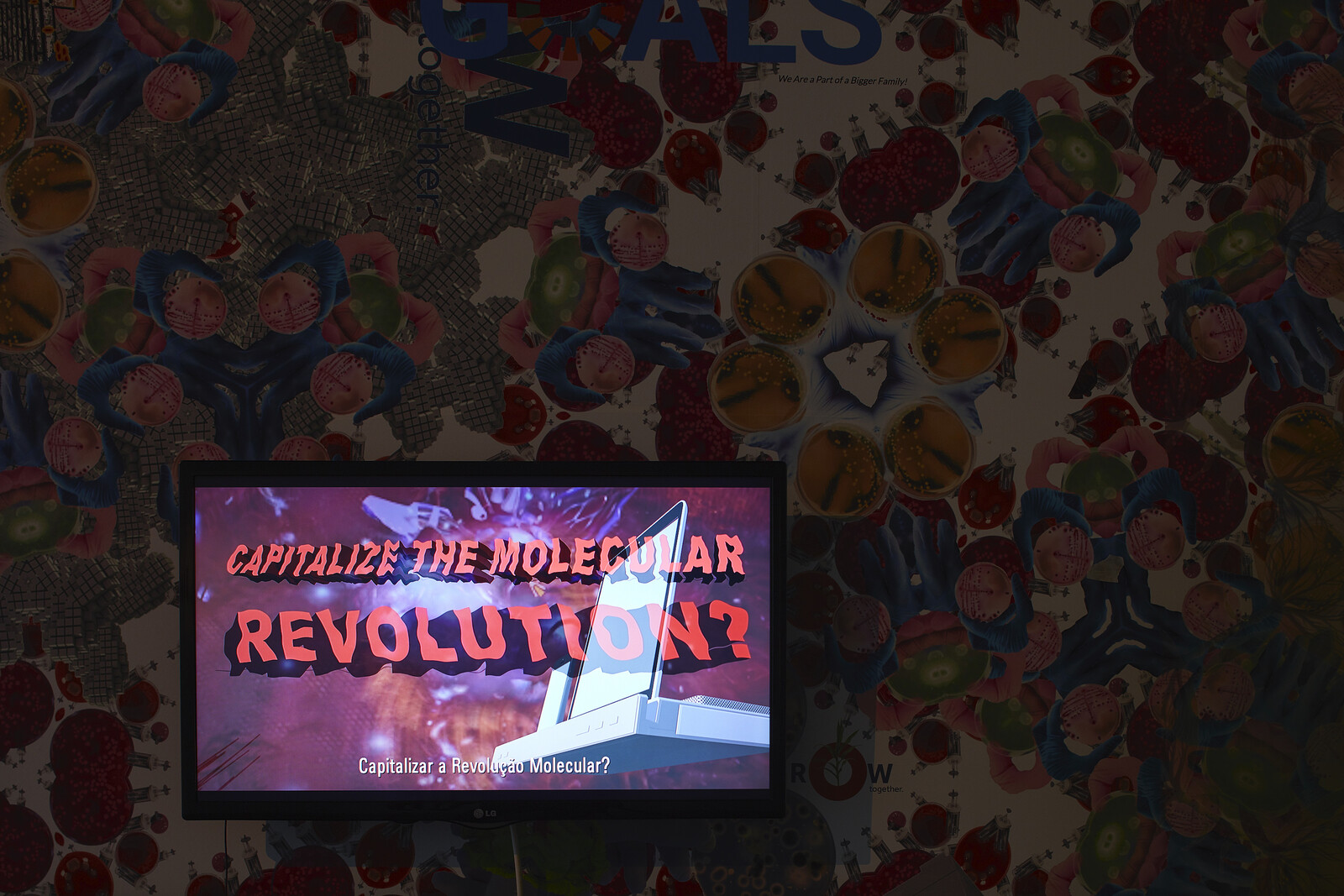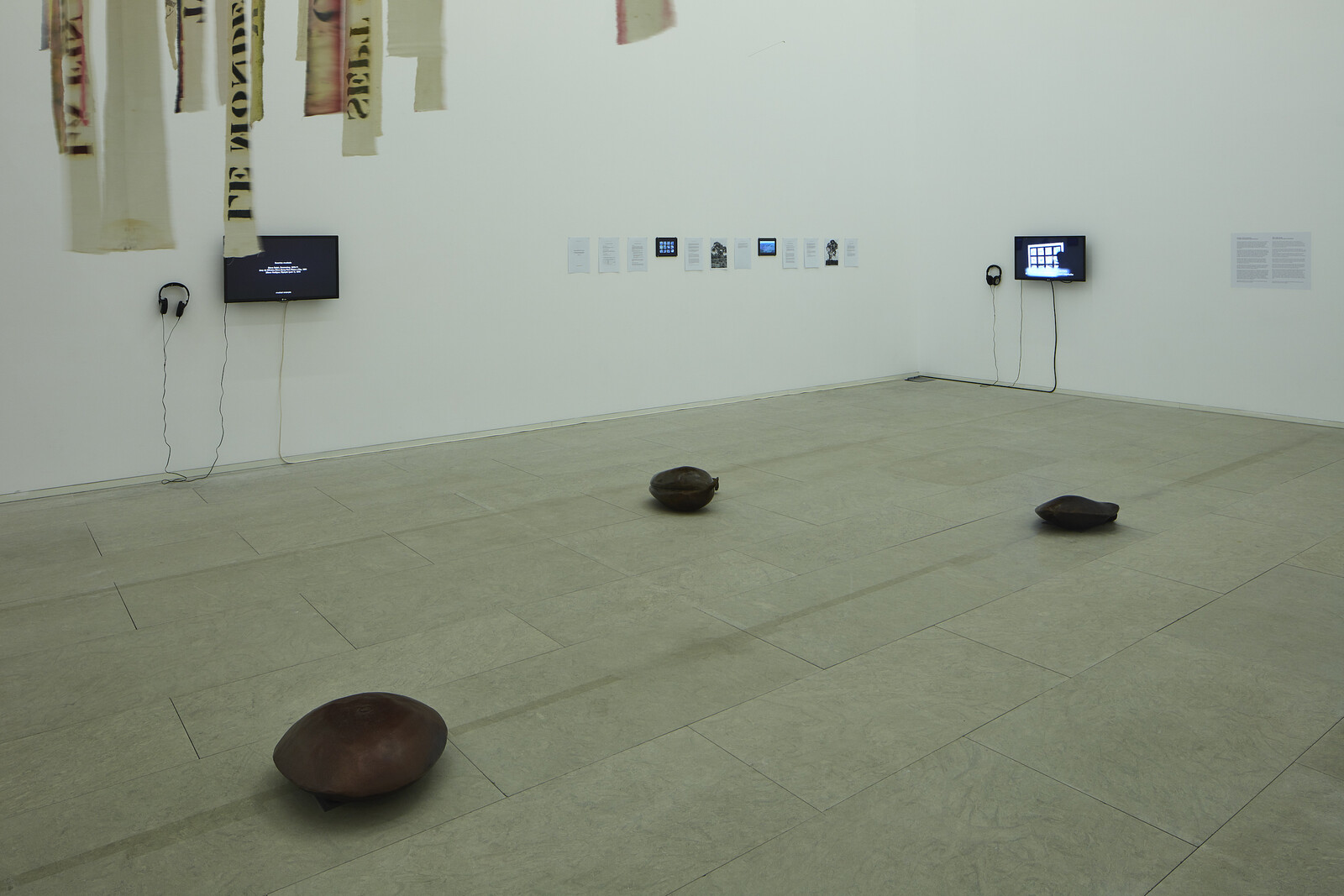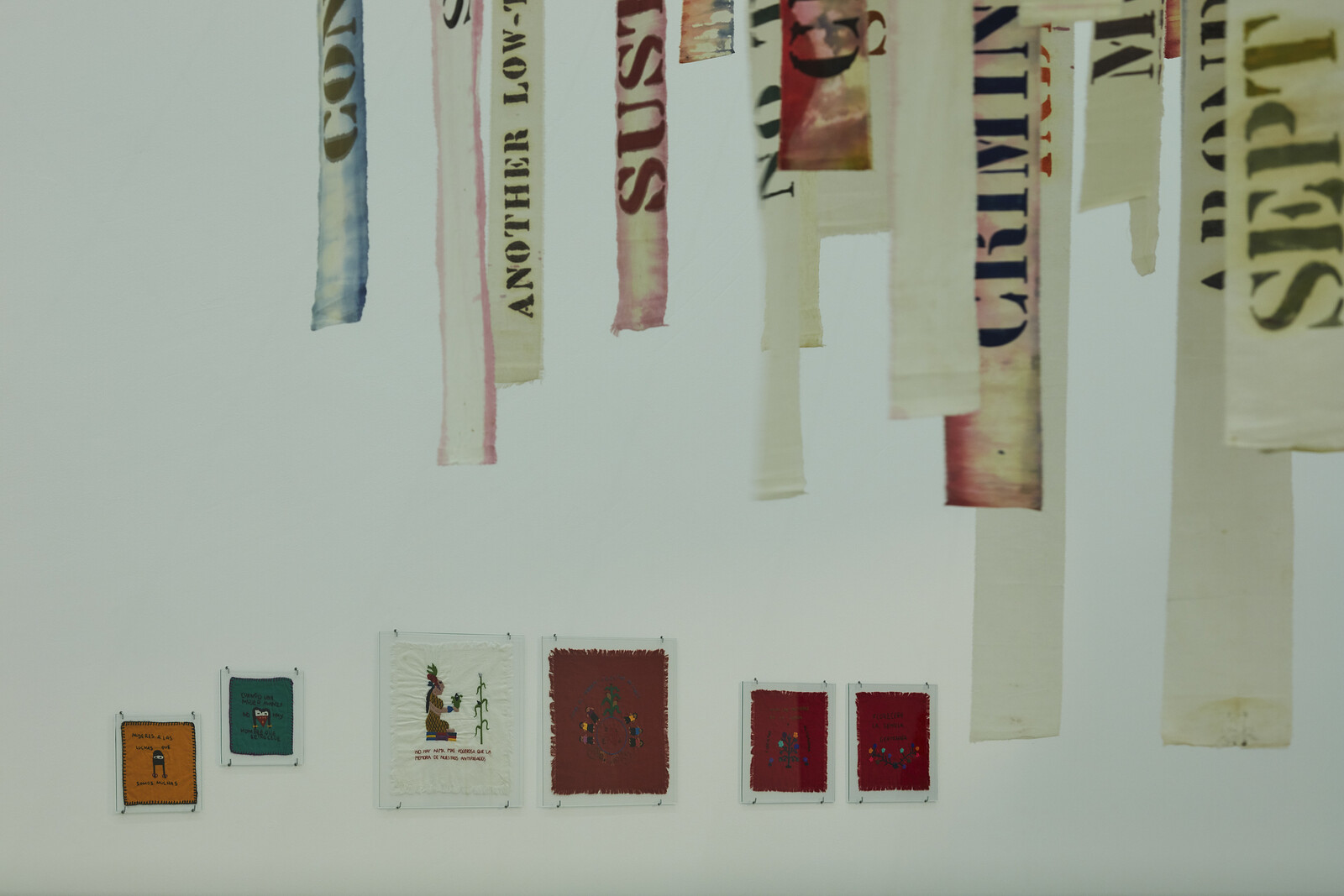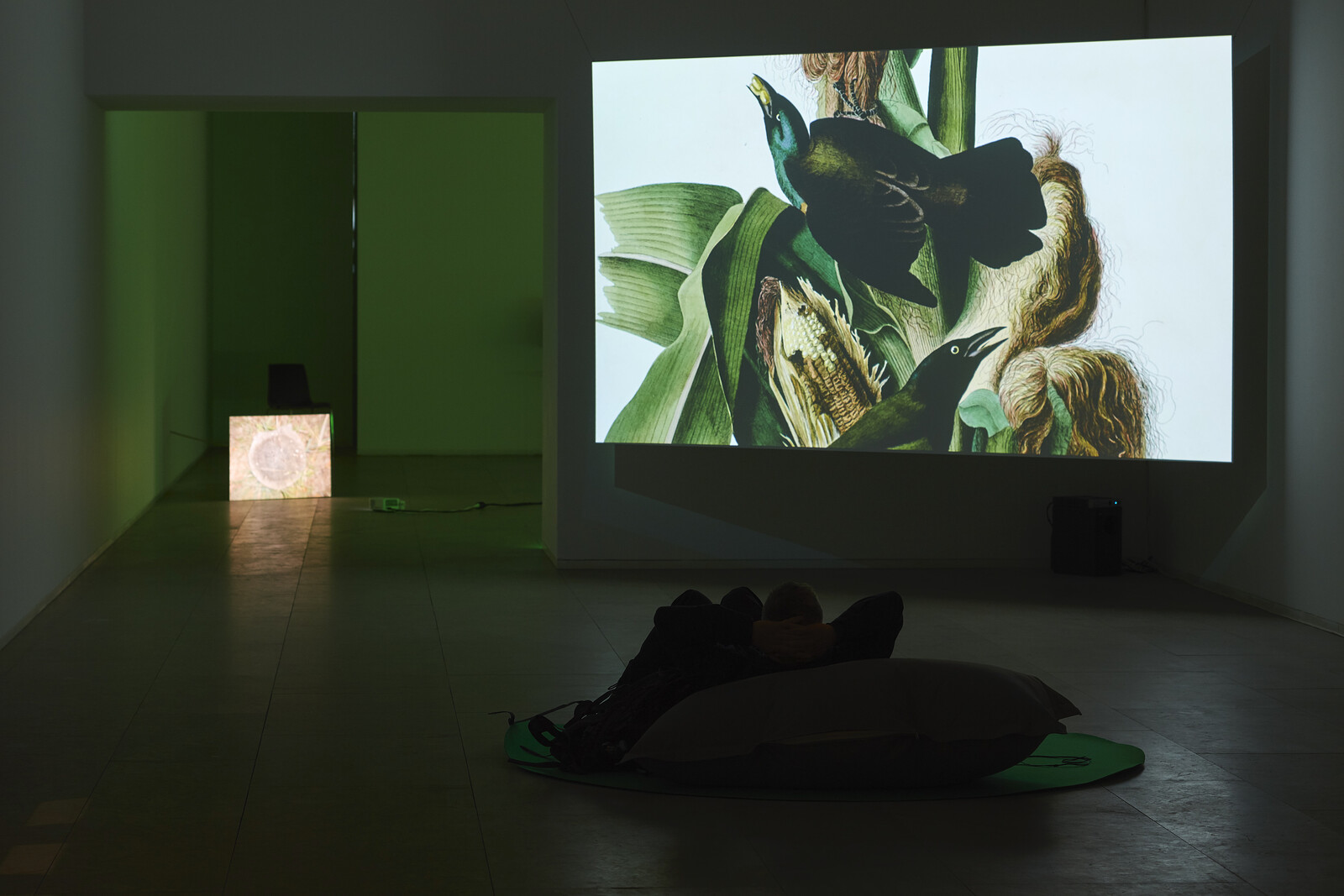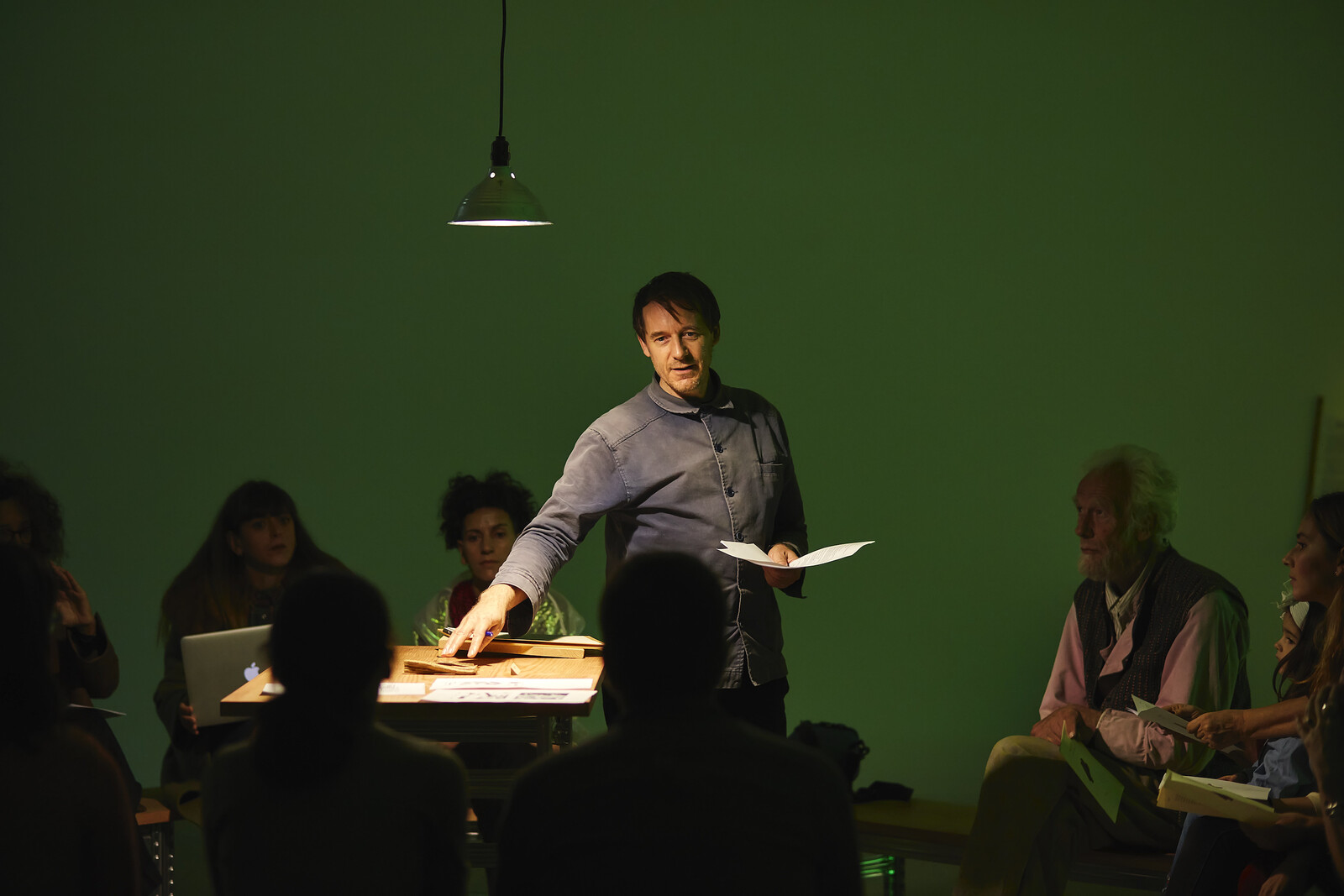The “vegetal turn” in contemporary art has begun to explore the possibility that plants are sentient, and are thus in constant, contiguous, and contingent interaction with the world. Reflecting this growing trend, the exhibition “Plant Revolution!,” curated by Margarida Mendes, introduces parallels between plant consciousness, advances in genetic and cybernetic research, and visual culture.
A video by Pedro Neves Marques, The Pudic Relation Between Machine and Plant (2016), displayed on an LCD screen, opens the exhibition. It depicts a looped interaction between a robotic hand and a Mimosa pudica, the iconic plant classified by Carl Linnaeus in the eighteenth century, known for closing in on itself when touched. Adjacent to the video is a display of research responding to the ideas in Teresa Castro’s “The Mediated Plant.”1 Castro’s essay attempts to reassess (and eventually redraw) the anthropocentric logic of appropriation that divides subjects from objects, placing humans in the former category and animal and plant life in the latter. Excerpts of the text appear next to films—among them the German expressionist Max Reichmann’s 1926 film Blumenwunder [Miracle of Flowers] and Zeline Rostliny [Green Plants] (1955), by the Czech botanist Jan Calábek—and extracts from Charles Darwin and Étienne-Jules Marey’s writings in which they describe the possibility of sentience in plants and animation processes in film, respectively.
A nearby selection of works explore cognition and mediated perception. Three murals from Richard Lowenberg’s series “Bio-Dis-Plays,” Dolphin-Space, The Bicameral Mind, and The Frogs’ Brain (1971–78), part of a body of work experimenting with bio-feedback, bio-telemetry, and enviro-bio-sensing systems, are paired with three canvases by Diogo Evangelista. In these paintings, titled Pure power Plant, Black Domina, and Amnesia (all 2013), the artist covers images of plants with monochromatic washes of watercolor. Together with an excerpt from Erik Davis’s book High Weirdness: Drugs, Esoterica, and Visionary Experience in the Seventies (2019), and the green LED light that illuminates the works, the display creates a heady, intoxicating atmosphere, and reveals a larger curatorial ambition tied to the culture surrounding psychoactive plants.
Positioning plants as a pharmakon (both remedy and poison) is a 1991 lecture by Terence McKenna titled “Sacred Plants as Guides,” shown on a monitor facing Joachim Koester’s 16mm film animation My Frontier Is an Endless Wall of Points (After the Mescaline Drawings of Henri Michaux) (2007), in the same gallery. An installation and performative gathering Thing 000777 (Da Vine) (2019), by Agency (an initiative founded in 1992 by artist Kobe Matthys), brought together a phytotherapist, an ecologist, a psychologist, an anthropologist, and a patent attorney. During the exhibition’s opening weekend, Agency discussed a dispute raised in 1999 between the US Patent and Trademark Office, the Center for International Environmental Law, and indigenous Amazonian groups concerning the California-based International Plant Medicine Corporation, which in the mid-1980s patented the ayahuasca vine. The legal appropriation of vegetal life for biotechnological and pharmaceutical interests creates a link with the following chapter in the exhibition. “Decolonizing the Soil” problematizes legal histories and fictions surrounding vegetal life, while proposing we learn from being with plants and slowing down to the pace of their growth.
In a text commissioned for the exhibition, Fernando García-Dory refers to this gallery as a “mystical ecology,” in which the artist figures as an “agro-poetic” figure of collective ecological consciousness. In the video installation Introdução à Agropoesia de Libertação [Introduction to the Agropoetry of Liberation] (2019), Filipa César discusses agricultural engineer Amílcar Cabral’s soil science with his role in anti-colonial movements in Guinea-Bissau and Cape Verde. The multimedia installation Trees, Vines, Palms and Other Architectural Monuments (2013-ongoing), by Paulo Tavares in collaboration with Bö’u Xavante Association, portrays a lost village in a deforested area of Amazonia, while a short video, Molecular Colonialism: A Geography of Agrochemicals in Brazil, based on research by Larissa Mies Bombardi (2018), by inhabitants (Mariana Silva and Pedro Neves Marques) investigates agrochemical contamination and poisoning in Brazil.
Marking the transition to the following gallery is a mural by Mendes. It resembles a reptile and it was inspired by Jeremy Narby’s book The Cosmic Serpent (1998) in which the Canadian anthropologist explores possible connections between shamanism, ayahuasca, and molecular biology. Included in this section of the show are three prints by Suzanne Treister, among them HFT The Gardener (2014-15) that narrates the fictional life of a high-frequency trader and “‘techno-shaman’.” They are placed across Genesis Machines, indigo farming (2019), an installation by knowbotiq (Yvonne Wilhelm and Christian Huebler) comprising kaleidoscopic wallpaper, a video, and a costume made from white neon tubes, which addresses global food security and the reproduction of agricultural plants in laboratories. The work is in close dialogue with a short video essay by Neves Marques, Linnaeus and the Terminator Seed (2017), which closes the curatorial narrative by returning to the work of the eighteenth-century botanist and speculating a genealogy of contemporary transgenics that extends from modern botany to the post-natural management of reproduction.
Mendes’s circular narrative seeks to compost exhibitionary norms by historicizing the capitalist expropriation of plant life and its effects on human consciousness, while examining art’s role in raising ecological awareness. As we metabolize the “vegetal turn” in contemporary art, thinking about plants begs the question of whether they think in return—and what curatorial formats rooted in their perspective might look like.
Teresa Castro, “The Mediated Plant,” e-flux Journal #102, September 2019, https://www.e-flux.com/journal/102/283819/the-mediated-plant/.
